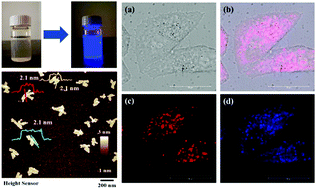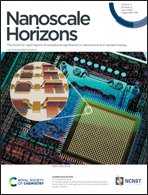Ultrathin boron nanosheets as an emerging two-dimensional photoluminescence material for bioimaging†
Abstract
Two-dimensional (2D) metal-free sheets with atomic thickness have been highly considered as promising candidates for fluorescent probes, due to their intriguing characteristics. In this work, 2D ultrathin boron nanosheets (B NSs) with a surface defect nanolayer can be effectively prepared by modified liquid phase exfoliation. The as-prepared ultrathin B NSs show blue fluorescence characteristics even with a quantum yield efficiency of up to 10.6%. Such luminescent behavior originates from the quantum confinement effect and the existence of a surface defect layer. In light of the advantages of being environmentally friendly, having high photostability and good biocompatibility, for the first time we have shown that ultrathin B NSs can be used as an emerging fluorescent probe for application in cellular bioimaging. It is believed that this work will open new avenues for ultrathin B NSs in biomedical fields, and it will also inspire the development of other elemental 2D nanomaterials.



 Please wait while we load your content...
Please wait while we load your content...